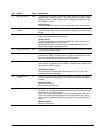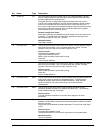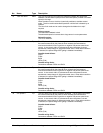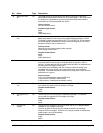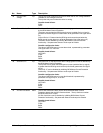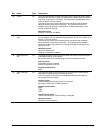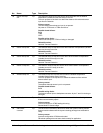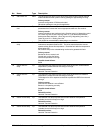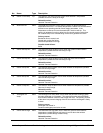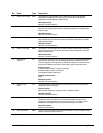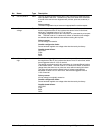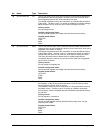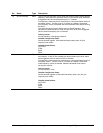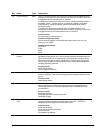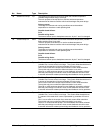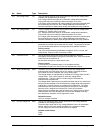
2-14
•
••
•
Chapter 2 Faults and Troubleshooting Innovation Series Medium Voltage GP Type - G Drives GEH-6385
No. Name Type Description
68 HtSink C over temp Trip
The HtSink C over temp trip fault occurs when heatsink C temperature
(variable Heat sink C temp) is too high.
Related functions:
Heatsink Thermal Protection
69 BICM card hot Alarm The BICM card hot alarm occurs when the sensor on BICM measures a
temperature that is hot. The sensed temperature is above 55C and the control
electronics are operating outside of their design parameters. If the
temperature continues to rise and exceeds 60C, the drive will trip. This
warning is generated in order to allow time for corrective action to be taken.
BIC ambient temp is the variable being monitored to generate this alarm.
Primary causes:
Blocked air flow to control rack.
Control rack cooling fan failure.
Ambient temperature is too high.
Possible board failures:
BICM
70 HtSink DB temp hot Alarm
The HtSink DB temp hot alarm occurs when the dynamic brake heatsink
temperature (variable DB heat sink temp) is high.
Related functions:
Heatsink Thermal Protection
71 HtSink DS temp hot Alarm The HtSink DS temp hot alarm occurs when the diode source heatsink
temperature (variable DS heat sink temp) is high.
Related functions:
Heatsink Thermal Protection
72 HtSink A temp hot Alarm
The HtSink A temp hot alarm occurs when heatsink A temperature (variable
Heat sink A temp) is high.
Related functions:
Heatsink Thermal Protection
73 HtSink B temp hot Alarm The HtSink B temp hot alarm occurs when heatsink B temperature (variable
Heat sink B temp) is high.
Related functions:
Heatsink Thermal Protection
74 HtSink C temp hot Alarm The HtSink C temp hot alarm occurs when heatsink C temperature (variable
Heat sink C temp) is high.
Related functions:
Heatsink Thermal Protection
75
Switchgear not
ready
Alarm
The Switchgear not ready alarm occurs when the permissive string to close
the main switchgear is not present. This permissive string ends at BTBH(8)
and includes customer contacts used to open the main. The primary purpose
of the alarm is to prevent charging of the DC bus until the switchgear is ready
to close.
Primary causes:
Switchgear not racked in.
Customer switchgear permissive not met.
76 HtSink DB rise high Alarm
The HtSink DB rise high alarm occurs when the dynamic brake heatsink
temperature (variable DB heat sink temp) is too far above the ambient
temperature (variable Bridge ambient temp).
Related functions:
Heatsink Thermal Protection



